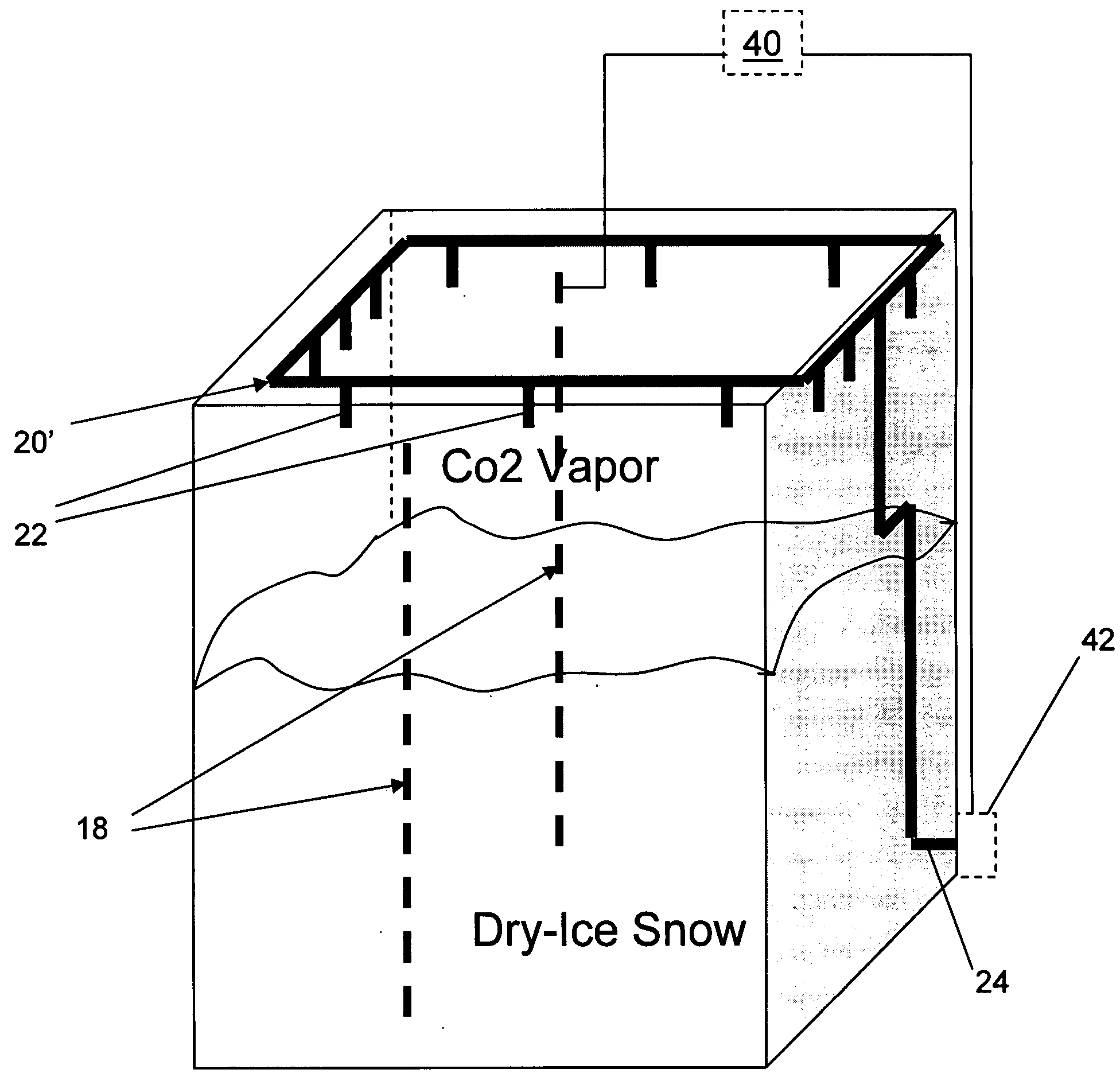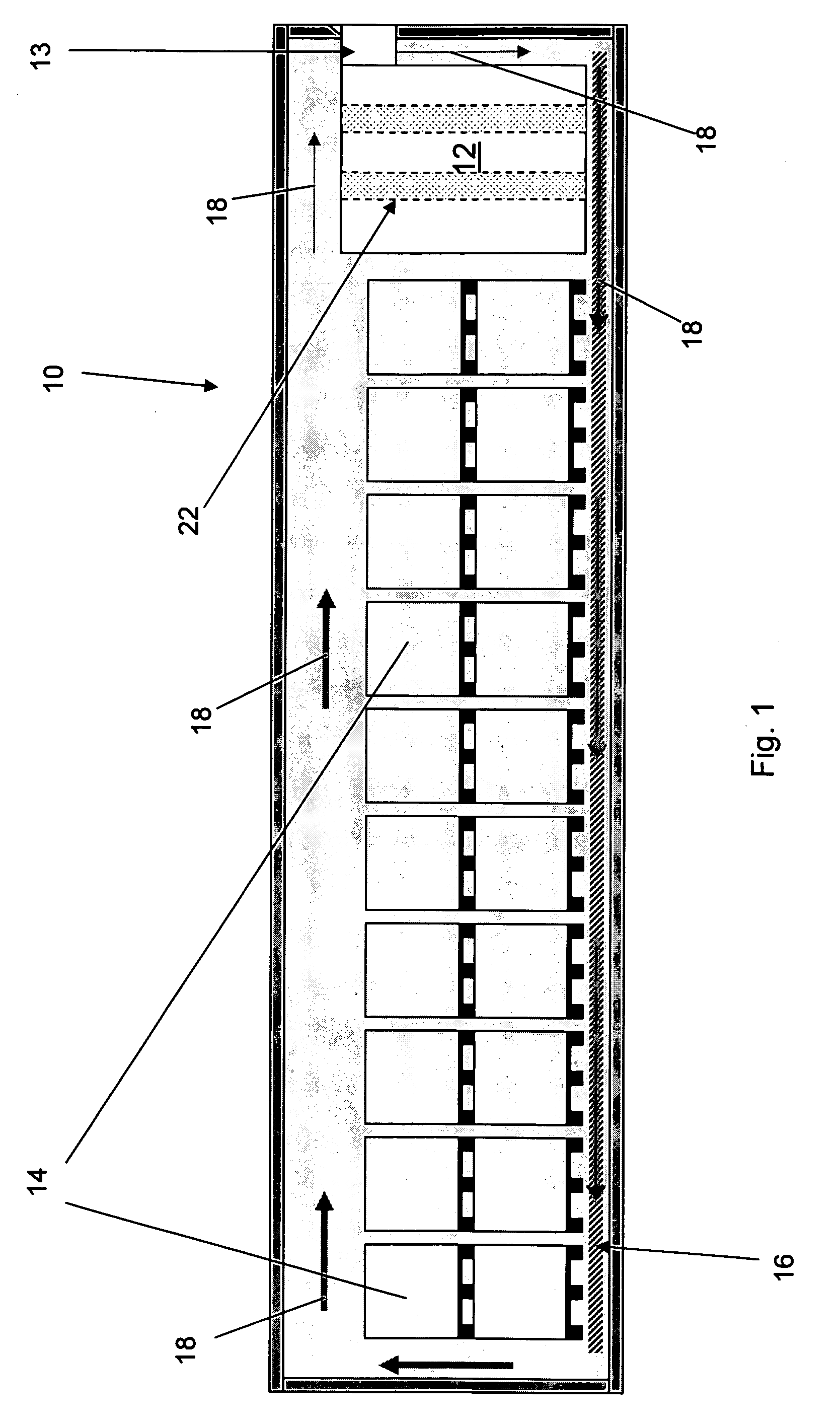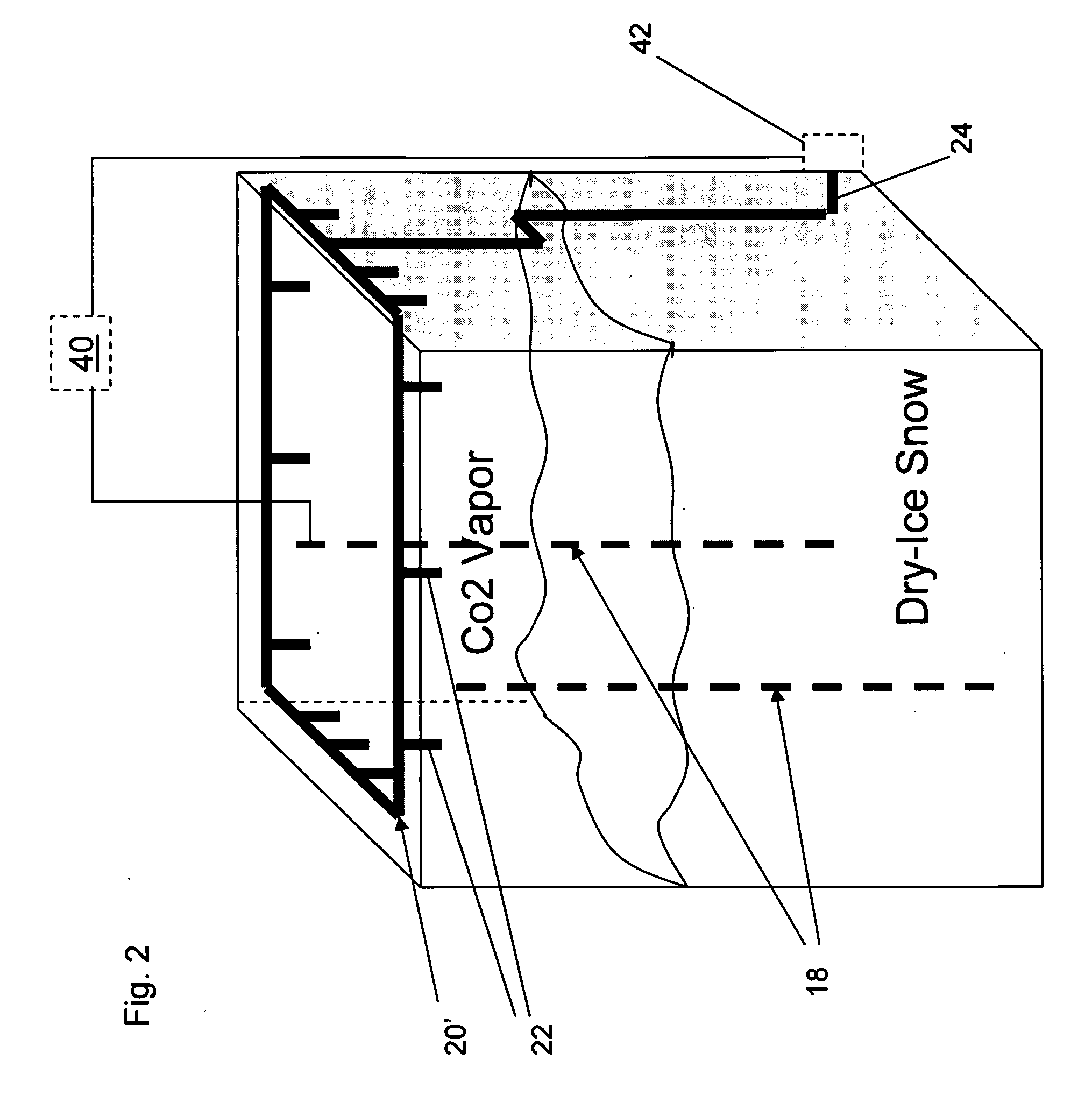Refrigerated Container for Super Frozen Temperatures
a technology for refrigerated containers and perishable materials, applied in the direction of domestic cooling devices, container discharge methods, lighting and heating devices, etc., can solve the problems of affecting the quality, color and taste, and general inability to freeze fish intended for consumption in an uncooked or raw state such as sushi,
- Summary
- Abstract
- Description
- Claims
- Application Information
AI Technical Summary
Benefits of technology
Problems solved by technology
Method used
Image
Examples
example
Example 1
[0060]A container as shown in FIGS. 5, 3 and 4, (without the optional air circulation shafts and Nitrogen refrigerant loop 20″) was built according to the following parameters. This exemplary container was tested and found to successfully bring the temperature within the container down to less than −50 degrees C.
[0061]Internal Dimensions of Container:
[0062]38′ 9⅞″ long
[0063]6′ 11 5 / 16″ wide
[0064]8′ 0″ high
[0065]The Dimensions of the Two Rear Bunkers:
[0066]96″ long
[0067]18″ wide
[0068]90″ high
[0069]space between the wall and the bunkers=2″
[0070]space between the two bunkers 43″+
[0071]The bunkers are positioned 58″ from the rear door
[0072]The Dimensions of the Front Bunker:
[0073]51″ deep
[0074]77″ wide
[0075]90″ high with T floor
[0076]space between ceiling and bunker=6″
[0077]space between walls and sides=3″
[0078]space between front wall and front of bunker=3″
[0079]Other Dimensions:
[0080]space between bunkers and front bunker=294″
[0081]In this example, the refrigerant compartmen...
PUM
 Login to View More
Login to View More Abstract
Description
Claims
Application Information
 Login to View More
Login to View More - R&D
- Intellectual Property
- Life Sciences
- Materials
- Tech Scout
- Unparalleled Data Quality
- Higher Quality Content
- 60% Fewer Hallucinations
Browse by: Latest US Patents, China's latest patents, Technical Efficacy Thesaurus, Application Domain, Technology Topic, Popular Technical Reports.
© 2025 PatSnap. All rights reserved.Legal|Privacy policy|Modern Slavery Act Transparency Statement|Sitemap|About US| Contact US: help@patsnap.com



